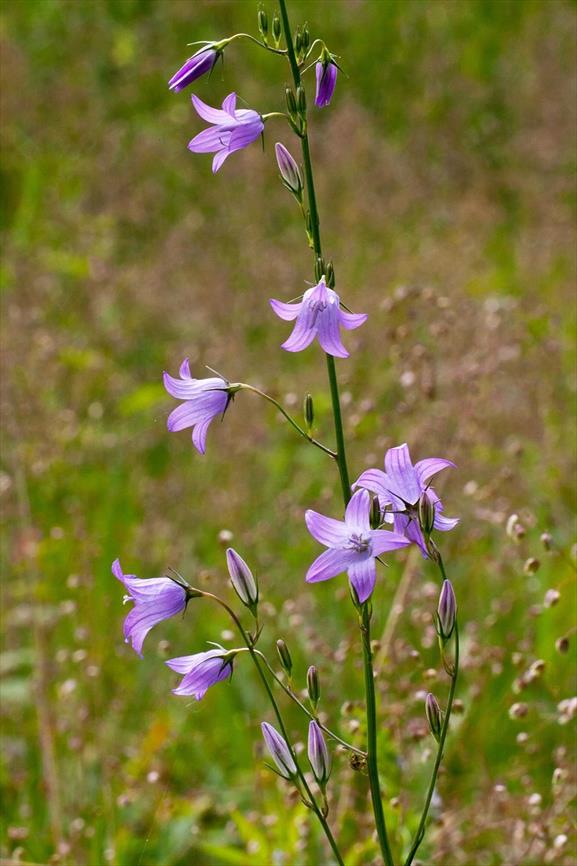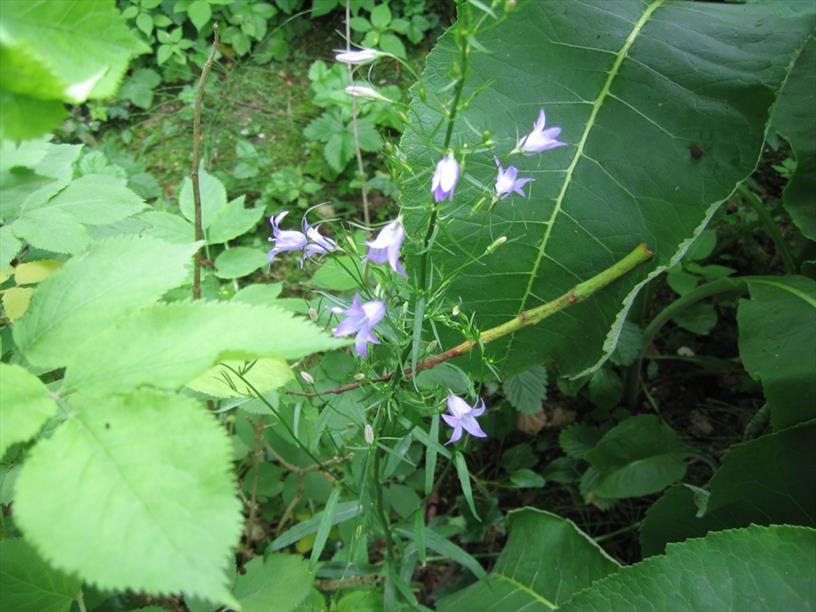Rampion Bellflower
Campanula rapunculus
Bellflower family (Campanulaceae)
Rapunzel’s tears brought the light
Rampion is a Campanula that reaches 90 cm in height bearing light purple flowers that flower from May to August. Its leaf and thick fleshy roots (‘turnips’) were traditionally a popular vegetable. The Dutch vernacular name ‘Rapunzel’ originates from rapa pontica (Latin for ‘turnip from nearby the Black Sea’).
A fairy tale tells of a women, pregnant with her first child, craved these little turnips so much that she forced her husband to steal them from a vegetable garden. Alas the vegetable garden belonged to the witch, Gothel, who caught the husband and only released him when he had promised to hand the newborn over to her. Gothel took the newborn, named her Rapunzel and locked her away in a tall tower. The only person to visit Rapunzel was Gothel. Rapunzel would let down her golden hair and allow Gothel to climb up and in through her window. The girl whiled away the days by singing sweetly and so lured a passing prince to climb up to her room. Gothel caught the intruder and cut off Rapunzel’s braid before sending her out into the wasteland. The desperate prince jumped out of the tower and was blinded by the thorny bushes below. The prince wandered through the wasteland until he heard Rapunzel’s sweet singing. They fell weeping into each others arms and Rapunzel’s tears brought back the sight to the prince’s eyes. They lived happily ever after.
Read more.... »Themes
Bees and bumblebees are frequent visitors attracted by the nectar and pollen.
In the past the leaves and thick, fleshy roots of rampion was used as a vegetable.
The Dutch ‘Rapunzel’ comes from 'pontica' (Latin for ‘turnip coming from near the Black Sea’). In the fairy tale the daughter, Rapunzel, is named after the turnips her mother loved to eat during her pregnancy.
Details
| Description: | Herb, up to 0.90 m. |
|---|---|
| Distributions: | Europe, western asia and northwest africa. naturalised in scandinavia and england |
| Habitat: | River dykes, roadside verges, grassland, woodland edges, in thickets and (calcareous) hedgerows, in disturbed (by human activity) places such as building site, and along railway lines and sidings. |
| Year cycle: | Flowers only once, (monocarpic biennuals and short-lived perennials) |
| Hardiness: | 14 - 23 f (hardy - average winter) |
| Flowering period: | Mei - augustus |
| Flower color: | Purple, white |
| Notes on flowers: | Light purple. |
| Fruiting period: | Augustus - september |
| At its best: | Mei - augustus |

